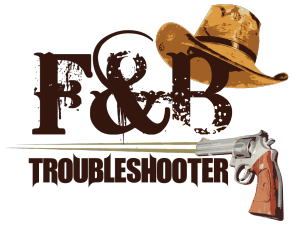
Hong Kong Theme Park and China Hotel Restaurant
 Delaware
North Companies was looking to sell its Asian subsidiary
headquartered in Hong Kong that included Ocean Park
Concessions, Flight Kitchens in Hong Kong, Bangkok, Guam,
Saipan, and China, and some Chinese businesses including the
restaurant in a Chinese Hotel in Guangzhou, China. The
problem management foresaw was that internal controls in
some of its businesses were weak and would need
strengthening before they could receive the desired price
from a sale.
Delaware
North Companies was looking to sell its Asian subsidiary
headquartered in Hong Kong that included Ocean Park
Concessions, Flight Kitchens in Hong Kong, Bangkok, Guam,
Saipan, and China, and some Chinese businesses including the
restaurant in a Chinese Hotel in Guangzhou, China. The
problem management foresaw was that internal controls in
some of its businesses were weak and would need
strengthening before they could receive the desired price
from a sale.
I was asked to relocate to Hong Kong and assume the position
of Director of Internal Audit. My wife took a leave of
absence as a school teacher and found a teaching position in
Hong Kong.
My first assignment was Ocean Park, a theme park built on
Hong Kong’s location as an island in the ocean. Food and
Beverage operations consisted of concession stands, a
restaurant buffet, a Chinese Restaurant, and a Pizza
restaurant.
My audit consisted of reviewing cash procedures,
purchasing/receiving, accounts payable, payroll, inventory,
capital expenditures, sales, etc. As I identified issues, I
discussed them with management. In my audit report, I
identified the various issues, made my recommendations, and
explained the benefit of implementing them. After discussing
the audit report with senior management, I was given the
directive to implement my recommendations.
My next assignment was to audit the Chinese restaurant in
the Friendship Hotel in Guangzhou, China (formerly Canton).
Every Monday morning, I would take the train to Guangzhou
and check in at the China Hotel. From there, it was a five
minute walk to the Friendship Hotel and DNC’s restaurant.
Since the staff only spoke Chinese, I had a Hong Kong
interpreter with me.
I observed the month end inventory and noted some issues
with inventory counting procedures. After discussing my
concerns with management, I trained the Chinese staff to
count systematically from left to right, top to bottom,
thereby ensuring all product was counted.
The restaurant menu had not been costed. I sat down with the
Chinese chef and my interpreter, and drew up Cost
Specification Sheets, listing each ingredient, the amount
used, and the cost of the ingredient. When all costs for a
menu item were tallied, I divided the cost by the sales
price to calculate the Food Cost percentage. When the General Manager
reviewed my cost analysis, he raised some prices and lowered a few to bring them closer to the Food
Cost percentage goal.
As a result of my audit work and subsequent internal control
implementations at these venues and others, internal
controls were strengthened throughout the company, Food and
Beverage Costs decreased, and profitability increased.
Delaware North Companies was able to sell its Asian
subsidiary at a price that was multiple times greater than
what it had paid for the company ten years earlier.
(RETURN)
